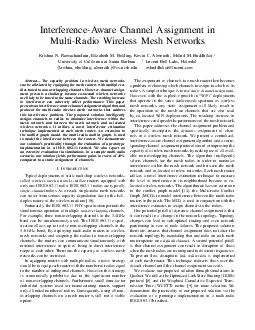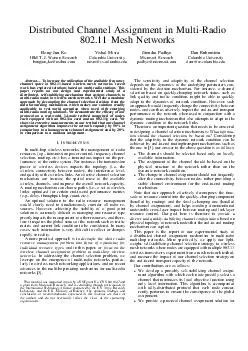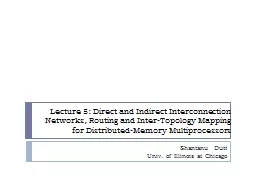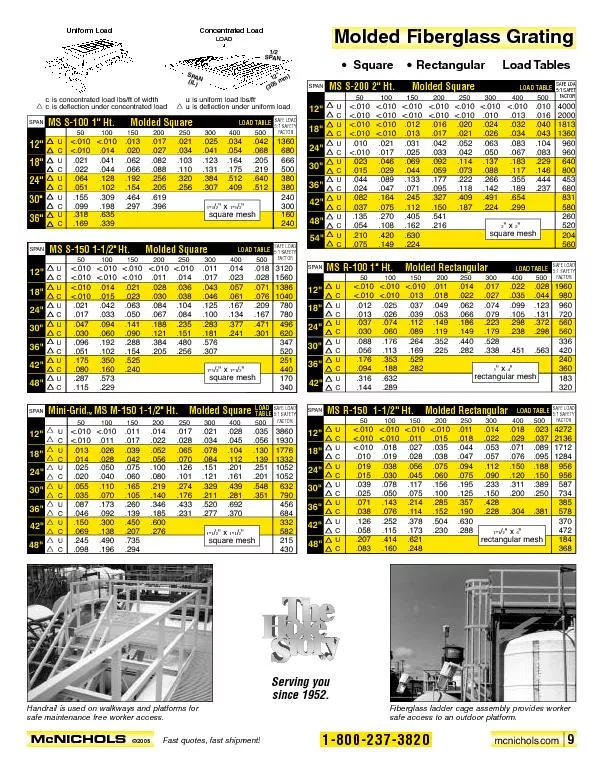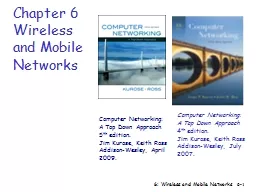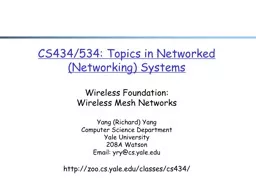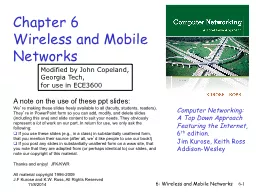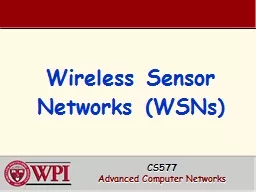PDF-InterferenceAware Channel Assignment in MultiRadio Wireless Mesh Networks Krishna N
Author : test | Published Date : 2014-12-14
Ramachandran Elizabeth M Belding Kevin C Alm eroth Milind M Buddhikot University of California at Santa Barbara Lucent Bell Labs Holmdel krishna ebelding almeroth
Presentation Embed Code
Download Presentation
Download Presentation The PPT/PDF document "InterferenceAware Channel Assignment in ..." is the property of its rightful owner. Permission is granted to download and print the materials on this website for personal, non-commercial use only, and to display it on your personal computer provided you do not modify the materials and that you retain all copyright notices contained in the materials. By downloading content from our website, you accept the terms of this agreement.
InterferenceAware Channel Assignment in MultiRadio Wireless Mesh Networks Krishna N: Transcript
Download Rules Of Document
"InterferenceAware Channel Assignment in MultiRadio Wireless Mesh Networks Krishna N"The content belongs to its owner. You may download and print it for personal use, without modification, and keep all copyright notices. By downloading, you agree to these terms.
Related Documents

